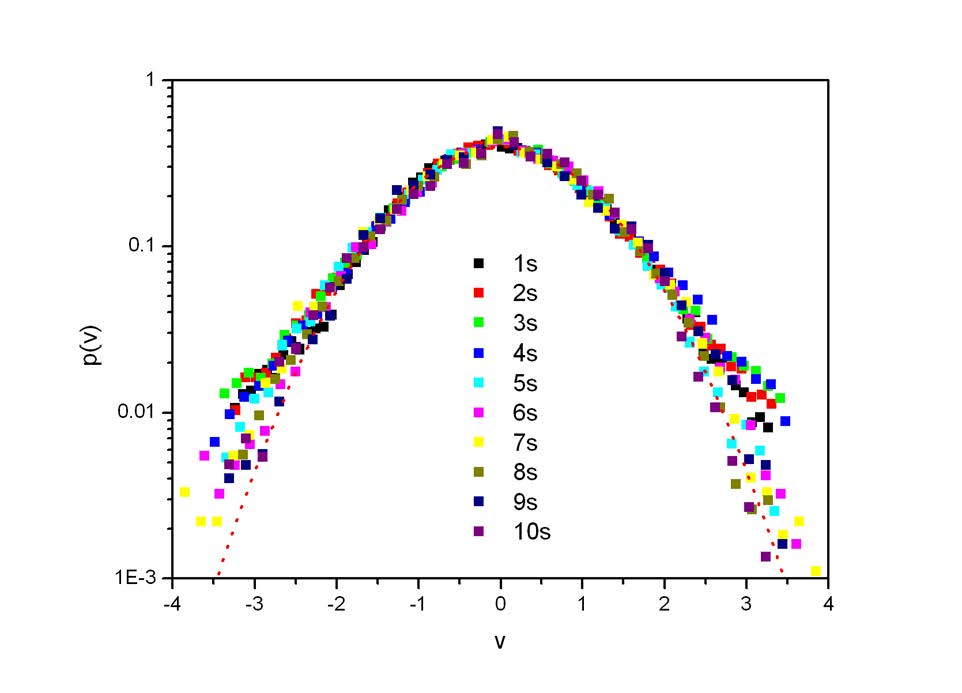Navigation auf uzh.ch
Navigation auf uzh.ch
Granular materials are inherent non-equilibrium materials and hence are model systems for the study of systems far from thermodynamic equilibrium. This gives rise to counterintuitive phenomena such as size-separation of binary mixtures or clustering transitions leading to compartmentalization of an initially well mixed collection of grains. We investigate the influence of gravitation on these phenomena by levitating the samples in a strong magnetic field gradient.
Using a 20T cryomagnet, we can produce a field gradient capable of levitating most diamagnetic materials [Berry and Geim, Eur. J. Phys. 18, 307 (2000)]. This means that we can carry out experiments testing the influence of gravity on the dynamics of granular gases. In addition, the fact that the effective gravity can be experimentally controlled in such a setup, it is possible to excite granular gases in a unique way. By applying an ac component to the main field, the levitation point of the particles is shifted, thus leading to a homogeneously shaken granular gas. This has implications on the nature of the velocity distribution of the gas and deviations from the Maxwell-Boltzmann distribution usually observed in granular materials.
To describe the behaviour of granular materials kinetic gas theory as been often used with varying success. We have studied the simplest case, namely that of a freely cooling granular gas (i.e. a granular gas in the absence of any external potentials). This is possible due to the fact that in our levitation setup we can compensate for the potential induced by gravity, while the confining potential is rather shallow on the scale of the excitation. This means that we have a good approximation of a free granular gas, whose cooling we can study using video-imaging and particle tracking. We find good agreement with the classical theory of Haff [Haff, J. Fluid. Mech. 134, 401 (1983)], where the theory needs to be adjusted for the presence of clustering at long times. With these adjustments, the data are described over the whole range without adjustable parameters. See also our 2008 PRL on the subject under publications.
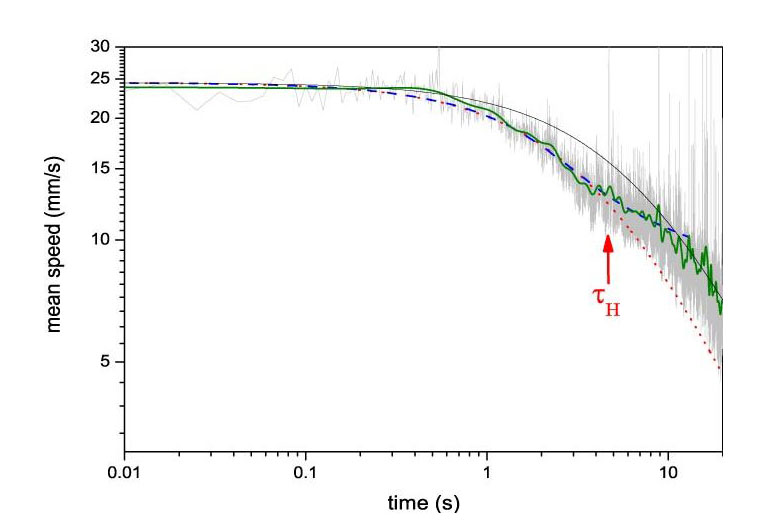
When a container with two connected compartments is shaken vigourously, the number of grains in each compartment is equalized as one would expect from the behaviour of a molecular gas [Eggers, Phys. Rev. Lett. 83, 5322 (1999)]. In a granular gas however, this is no longer true when the container is shaken slowly. This is due to the inelasticity of the collisions between grains leading to an instability breaking the symmetry. The theoretical description of this phenomenon explicitly takes into account the effect of gravity via a barometric distribution of the particle density with height. Using our setup, we can check this prediction of the scaling of the critical frequency with g experimentally, where we find that the predicted scaling is violated at low effective g. Building on our work on the free cooling of granular gases, we have been able to describe these deviations quantitatively. See also our 2009 EPJE on the subject under publications.
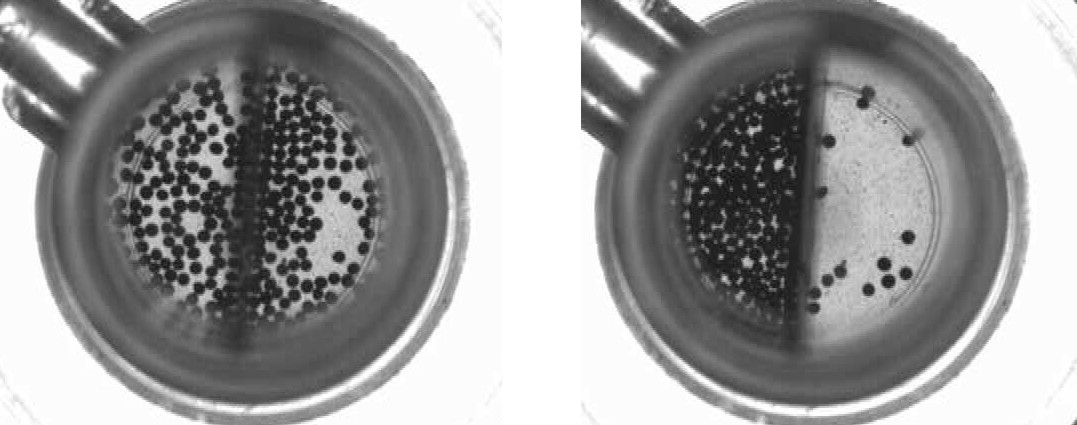
With access to long term dynamics as well as bulk heating of the granular gas, we study the influence of the heating method as well as the scaling behaviour of the velocity distributions in a freely cooling granular gas.
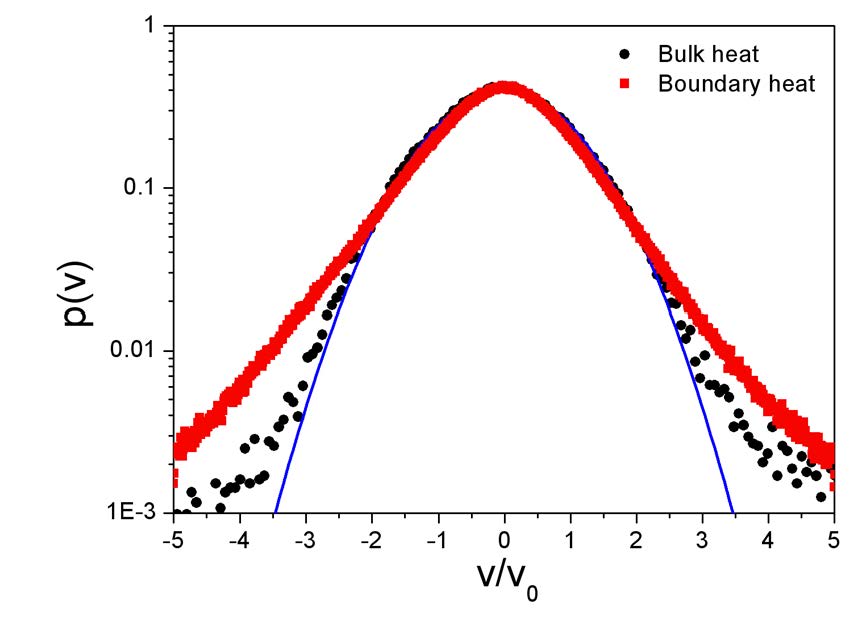
As can be seen, heating the gas by collisions solely with the container walls, gives stronger deviations from a Gaussian distribution (blue line) as predicted by van Zon and MacKintosh. However, even with bulk heating, deviations still occur due to inelastic collisions between particles.
This distribution is also conserved when cooling the granular gas, as shown below.
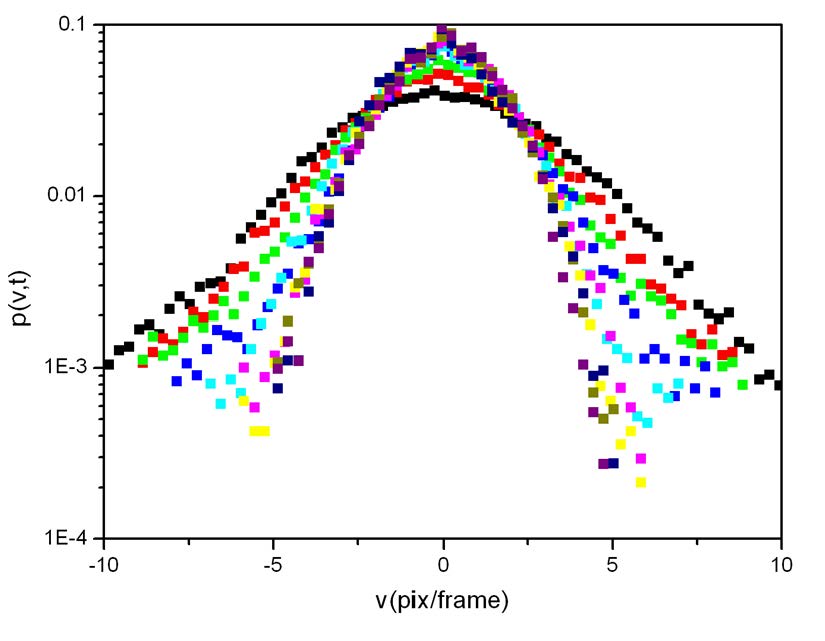
While the width of the distribution decreases naturally as the gas cools, the shape of the distribution remains the same, as can be seen by scaling the results with their corresponding granular temperature.
